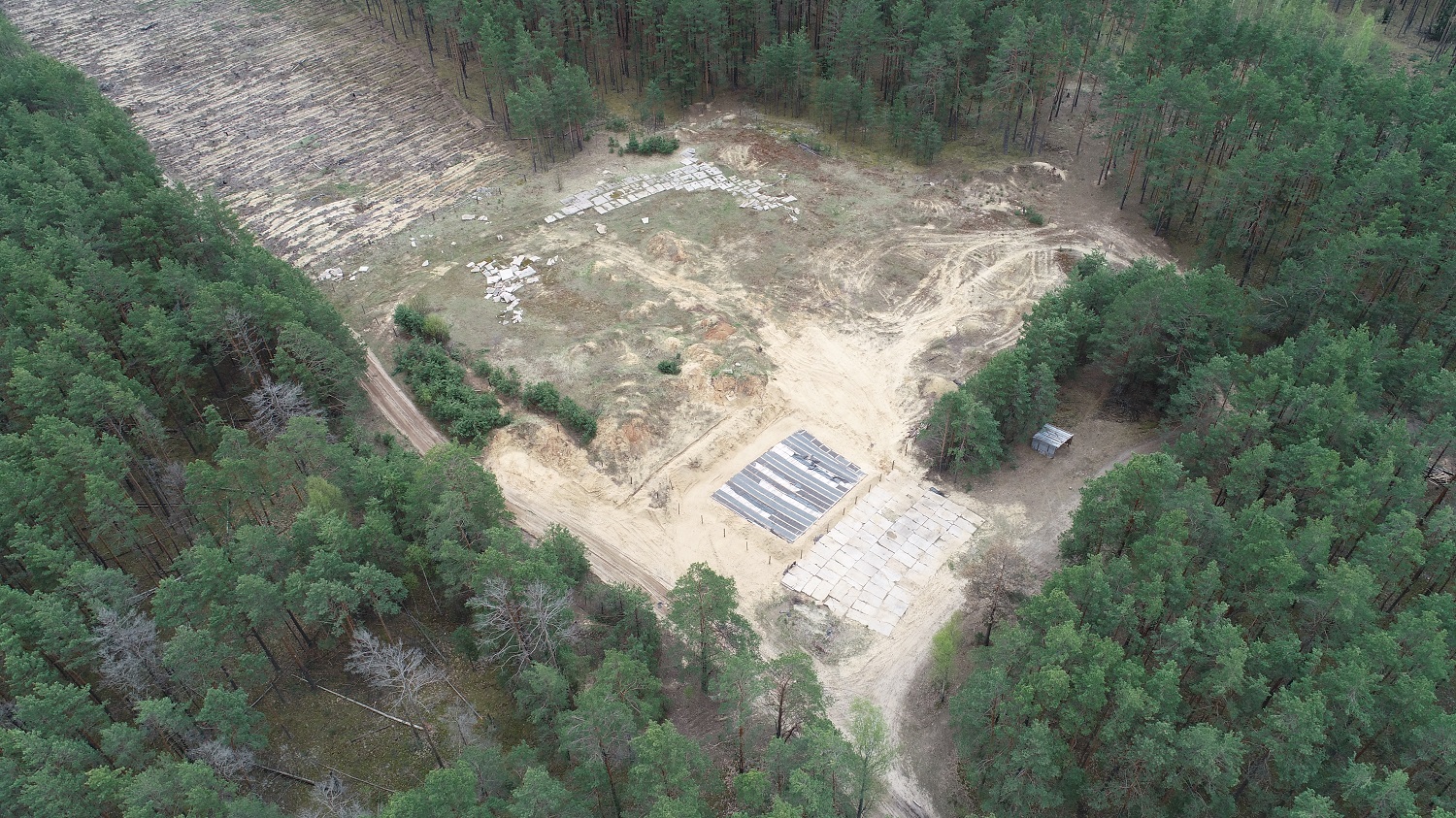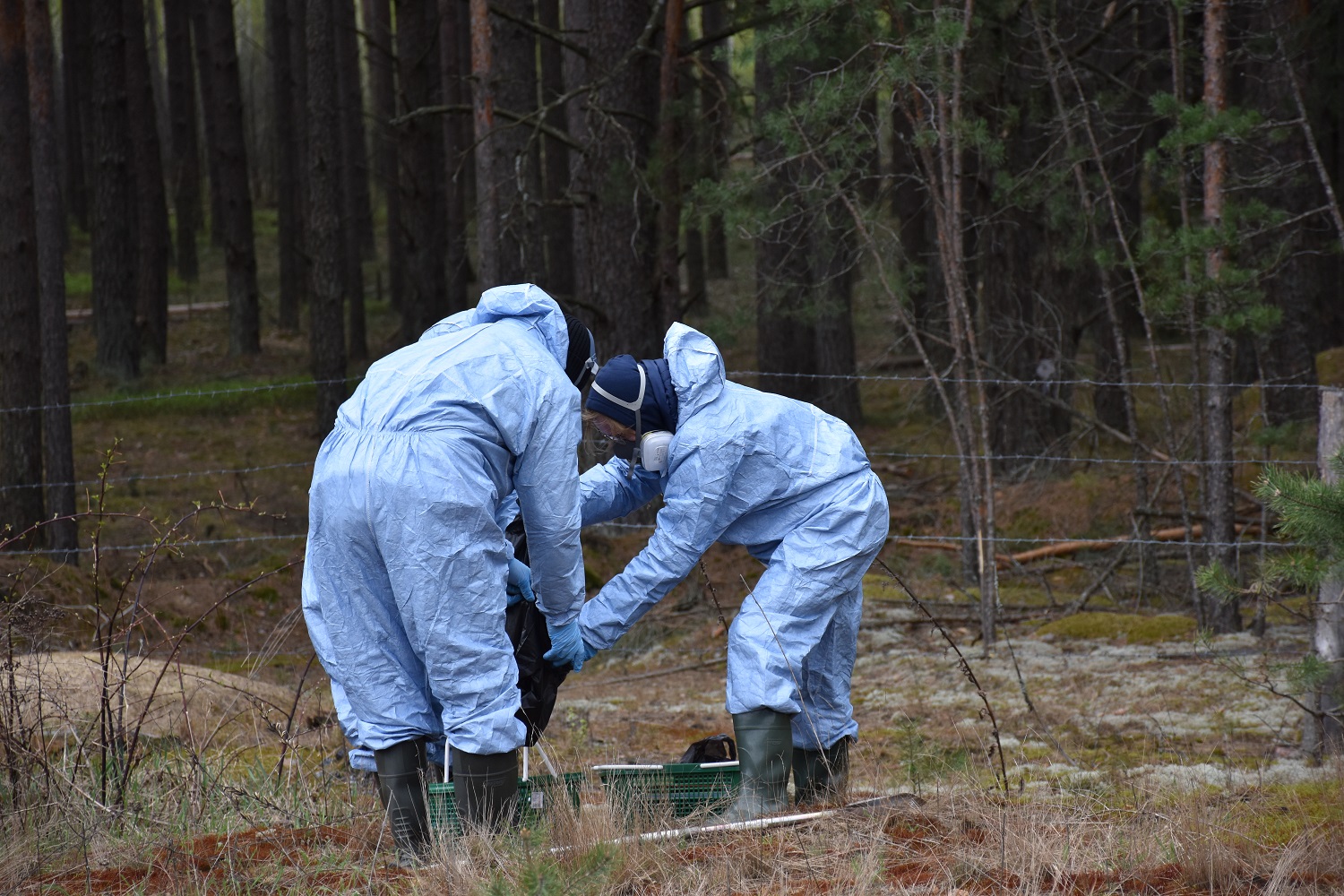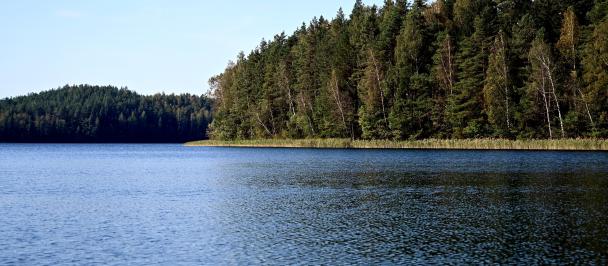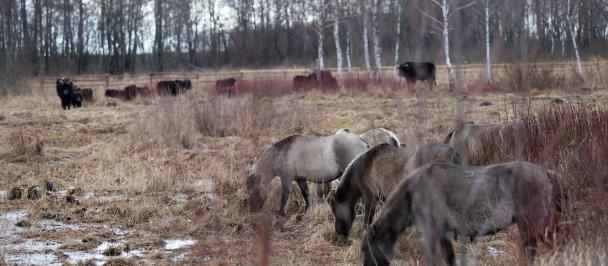Bird-eye view on the storage.
UNDP and the GEF supports the monitoring mission in Homiel region to assess the impact of the local obsolete pesticides stockpile on the environment and communities.
The international technical assistance project “Sustainable Management of Persistent Organic Pollutants and Chemicals in the Republic of Belarus, GEF-6” is conducting a frontal monitoring of the Petrikovsky obsolete pesticide burial site.
The monitoring will help to determine the scale and degree of the impact of the site on the environment and public health.
According to the agreement with the Ministry of Natural Resources and Environmental Protection of Belarus, the Republican unitary enterprise “Central Research Institute for the Integrated Use of Water Resources (TsNIIKIVR)” will do the monitoring.
Stage-by-stage extraction of pesticide mixtures and their transportation for long-term storage owned by the Municipal Unitary Enterprise “Complex for disposal and dumping of toxic industrial waste of Homiel region”, carried out since 2008 by the nature user of the territory (JSC “Gomelkhimagro”), has been temporarily suspended. Total about two thousand tons have been removed. However, the Petrikovskoye burial site still remains the largest burial site of obsolete pesticides in Belarus, which contains about 2.5 thousand tons of hazardous chemicals.
Experts take soil tests at the stockpile site.
In the beginning of May 2021, specialists from TsNIIKIVR and the State Institution “Republican Center for Analytical Control in the Field of Environmental Protection” organized a reconnaissance field monitoring visit and did an aerial photography of the site with adjacent territories. They also took soil samples for subsequent measurement of the soil contamination with chemicals.
In the upcoming steps, the experts will determine the presence and speed of propagation of the halo of environmental pollution in the area of the burial site, assess the potential risks of its impact on the environment and on public health. The results of the monitoring will be used for an action plan to remove the obsolete pesticides stockpiles for their further elimination. The plan will identify a time frame and costs of the activities along with financial and economic rationale of the site’s utilization.

 Locations
Locations





